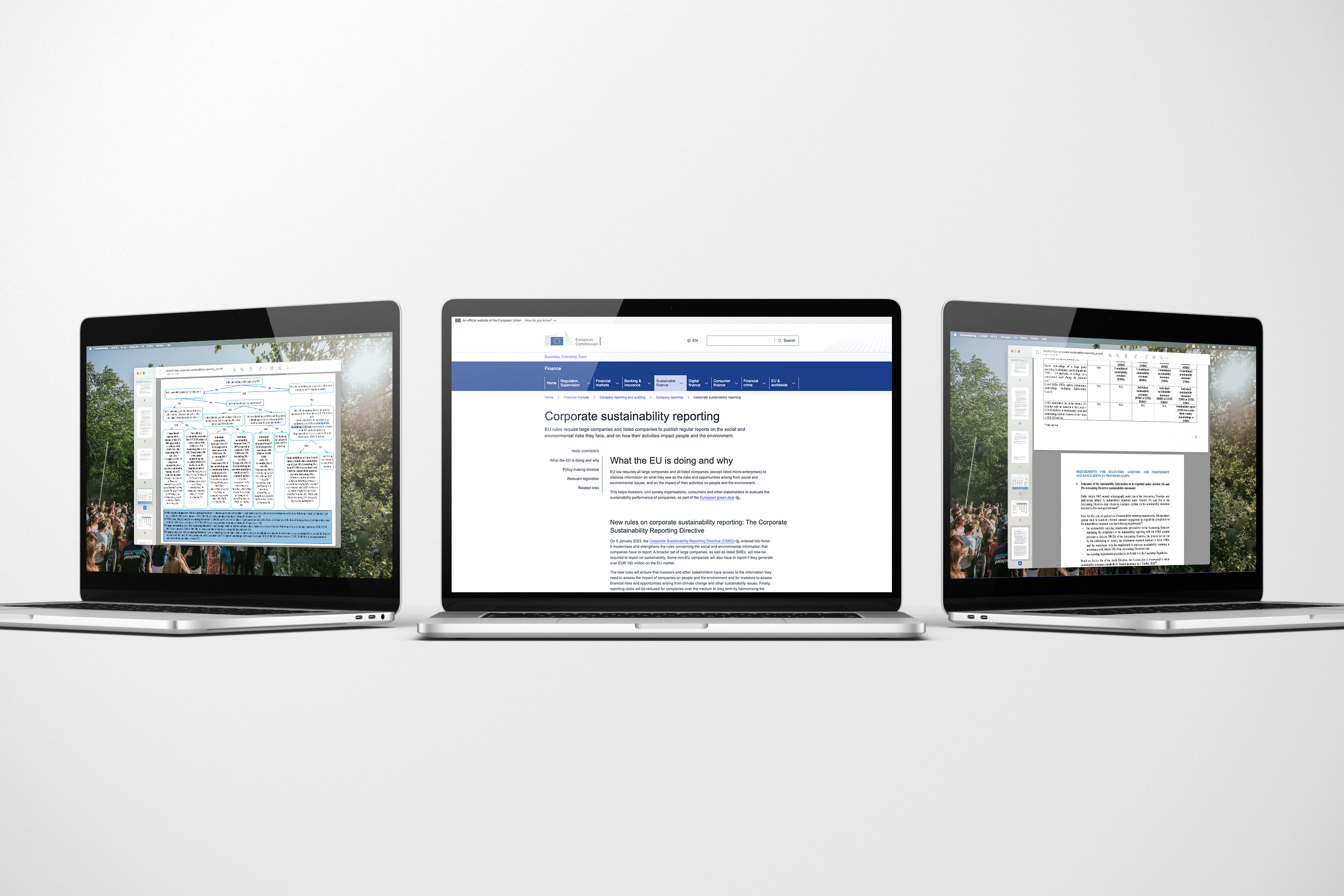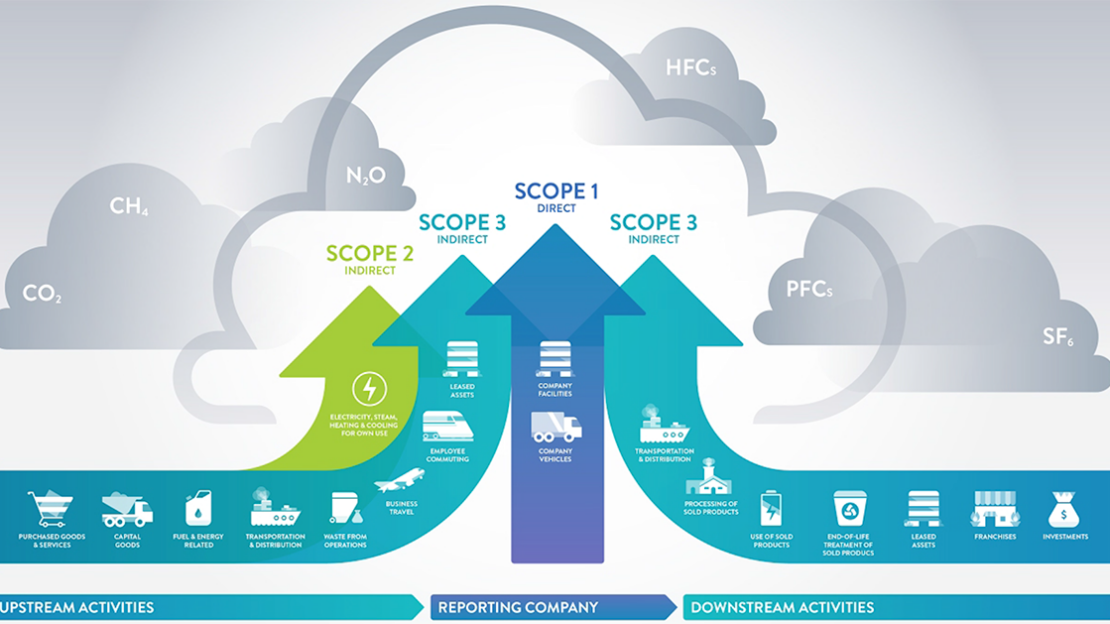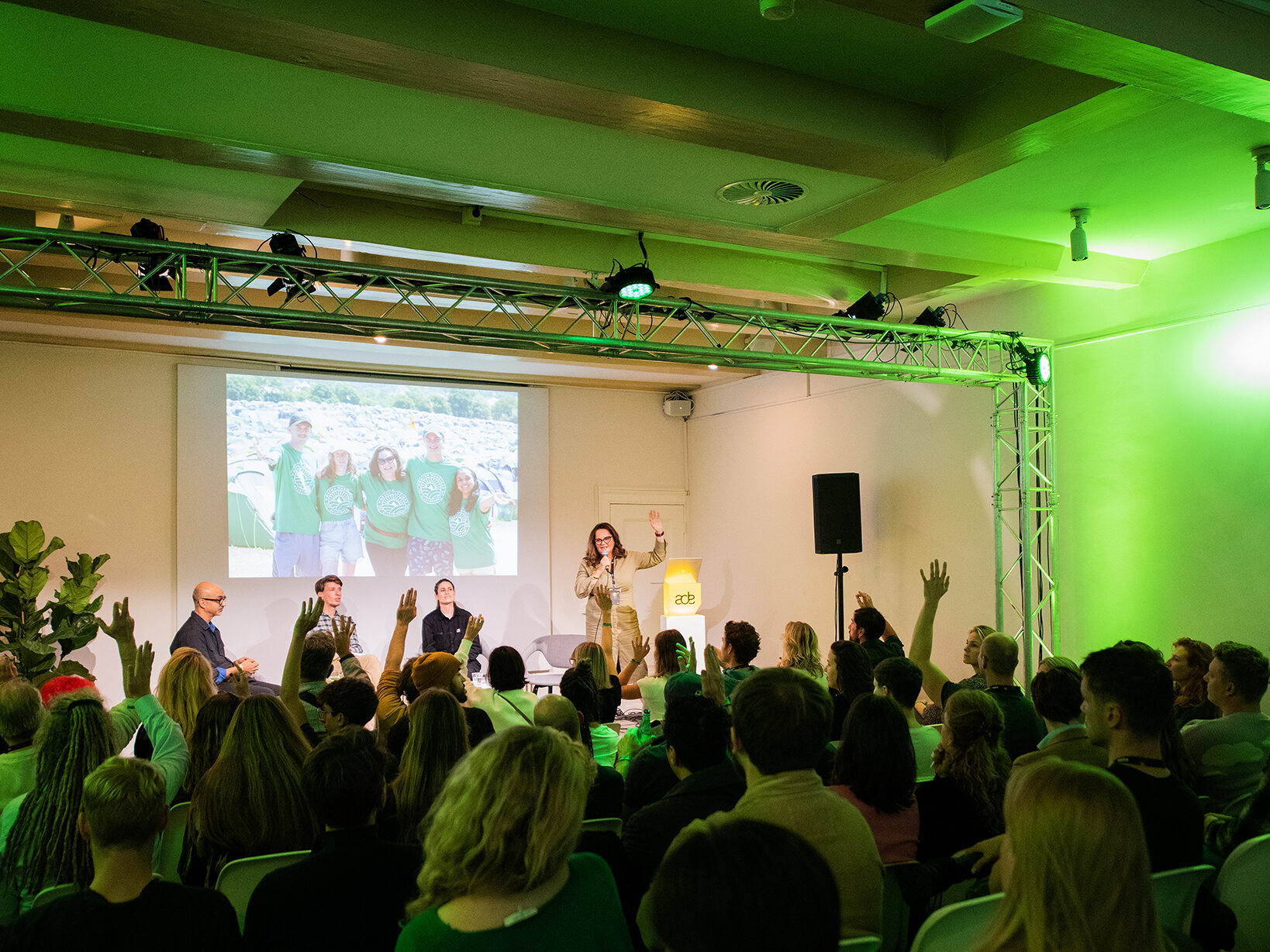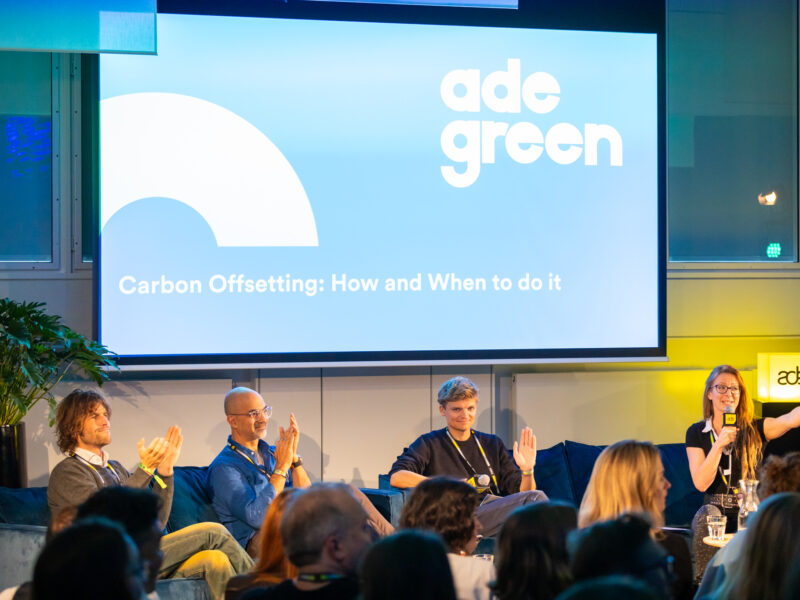
Navigating CSRD: What the new EU Regulation Means for the Music Industry
Around the world, mandatory sustainability reporting is becoming a reality for many industries, including the music sector. From the USA to Japan, and across Europe, initiatives like the UN Sustainable Development Goals and the Paris Agreement are driving change. In Europe, this has culminated in the EU Green Deal, which aims to regulate sustainability at both a national and corporate level. Under this umbrella, several directives impact industries, including the events and entertainment sectors.
One of the most significant of these is the Corporate Sustainability Reporting Directive (CSRD), adopted in April 2021. Much like financial reporting, this directive mandates organizations to publicly disclose environmental, social, and governance (ESG) data. While the CSRD does not replace existing legislation, it raises the bar for transparency and comparability on sustainability issues.
For music festivals, venues, record labels, and other organizations in the music industry, this directive presents both challenges and opportunities. Here’s what you can expect in the coming years.
This article is a more extended overview of our CSRD feature written in the run-up to ADE Green 2024, where we will showcase two programs on CSRD. Make sure to join us in October, get your tickets for ADE Green here.
Impact on Large Events and the Organizations behind them
Large-scale events like music festivals and concerts have a significant environmental footprint due to energy consumption, waste, and transportation. These events often require complex logistics, such as moving artists, crews, and equipment across the globe, not to mention the huge crowds attending. The CSRD will force major festival organizers, venues, and promoters to account for their impact by disclosing comprehensive sustainability data, from energy and water usage to social and ethical practices.
The CSRD applies to all organizations that meet at least two of the following criteria: over 250 staff (including volunteers), over 50 million euros in revenue, or more than 25 million euros in total assets. An organizer or venue with multiple events should aggregate the numbers to determine if CSRD is mandatory. If a parent organization is based outside the EU and has a revenue of over 150 million euros, an EU subsidiary with a revenue of over 50 million euros is exempt, provided the parent organization reports according to EU standards, i.e. CSRD or NFRD. Most large organizations must comply by 1 January 2025. This means implementing new reporting structures, aggregating data across multiple shows or tours, and ensuring transparency through an impact report by 2026.
For record labels or those managing large touring acts, the challenge will be similar. Tracking the ESG performance of tours, including factors such as artist transportation and energy usage, will become critical for compliance. Venues hosting these events must also take steps to report on their operational impacts.



Impact on Small Organisations
While smaller events and independent venues may not be immediately subject to CSRD reporting, the directive will eventually trickle down.The expectation is that small organizations will also be asked to report ESG data on a short-term basis. These requests may come from investors, funding parties, sponsors, municipalities, cities, staff, NGOs, suppliers, artists, or other parties – for transparency or funding purposes.
On an EU level, the CSRD is being detailed in compulsory and voluntary standards for specific sectors, meaning that small and medium-sized enterprises in the music industry should prepare for future reporting obligations.
Engaging Stakeholders
One of the core components of the CSRD is stakeholder engagement. Event organizers are expected to consult with stakeholders, including local communities, visitors, suppliers, and sponsors, to identify relevant sustainability issues, collect data, and gather feedback on their ESG performance. This could involve conducting surveys, organizing stakeholder meetings, or setting up advisory panels.
Stakeholders should be engaged throughout the event lifecycle to gather input, build consensus, and foster collaboration. Establish communication channels like forums or advisory groups to facilitate dialogue and idea exchange. Consider stakeholders’ diverse needs and interests, including local communities, participants, sponsors, and regulatory authorities.
Double Materiality Analysis
Identifying impacts, risks and opportunities (IRO’s) is a key starting point for sustainability in your organization. In this context, it is important to define the concept of ‘double materiality.’ Materiality comes from the financial and accounting world and indicates whether something is (financially) relevant or significant. The term is common in European reporting regulations, including the new CSRD.
Materiality works in two directions, hence the word ‘double’: the impact of an event on the outside world and the dependence of the event on the outside world. An example is water scarcity. An event uses a lot of water for water taps, toilets, campsites, cooking, cleaning etc. So here is the impact on the local water supply. The other way around, the event depends on the local water supply. A lack of water supply may pose a financial risk to an event.
A double materiality analysis is mandatory in the CSRD and helps prioritize, thus deploying people and resources where the impact is greatest. In this step, ESG data is essential.
Baseline Measurement
A baseline measurement provides quantitative and qualitative data on your event’s ESG performance. This is the first in line in the annual reporting cycle. Improve your data management systems and processes to effectively collect, track, and report sustainability data.
A bottleneck here is the obligation to include your value chain in the data collection process (due diligence). This means collecting data on suppliers, artists and partners (upstream) as well as your audience (downstream). An example is the data on greenhouse gas (GHG) emissions: scope 3 emissions include emissions that may be out of your direct control, such as artist transportation or employee commuting.

Sustainability Strategy
The CSRD requires organizations to integrate ESG factors into their business strategy, risk management, and decision-making processes. For event organizers, this means considering sustainability criteria when planning, organizing, and executing events. Develop a comprehensive sustainability strategy that aligns with the CSRD’s objectives and addresses the specific environmental and social impacts. Establish clear goals, objectives, and action plans in key areas, such as waste reduction, energy efficiency, diversity and inclusion, and community engagement.
Qualitative and preferable quantitative objectives shall be set based on the baseline measurement. Make sure to link your objectives to international, European, or national goals. Examples include (based on the Dutch Sustainability Ladder for Events):
- Reducing energy use per visitor per day by 10% (compared to base year).
- 100% of energy used is renewable energy from fixed power grid.
- 25% sustainable means of transport by suppliers.
- 50% of drinkwater is facilitated by free tap points.
- 60% of end of life materials is reused or recycled.
The combination of objectives, standards, and activities over time forms your sustainability strategy. A strategy can be elaborated in a multi-year program, for example, over a period of 3 years, and then translated in an annual program with concrete actions and activities. Each year, annual objectives are set at strategic, tactical, and operational levels.
Organization
Implementing a sustainability strategy across the organization requires a coordinated effort. Event organizers, record labels, and venues need to delegate responsibilities clearly, with mutual agreement on objectives. Training staff on ESG issues will be essential to foster a culture of sustainability across the organization.
Performance management
Performance management starts with setting measurable indicators, such as energy use per event or waste reduction targets (in specific units or percentages). These metrics will become vital in the ongoing process:
- Developing objectives, standards, and an action plan (Plan phase).
- Executing the action plan and working according to the standards (Do phase).
- Monitoring your indicators by identifying deviations from objectives and standards (Check phase).
- Control deviations and continuously improve (Act phase).
The goal of performance management is to continuously improve or be a learning organization. In practice, performance indicators are often not translated into daily behaviour (standards, actions, activities). Therefore, they remain ‘too distant’ – make sure to choose attainable, concrete indicators that inspire your team to improve upon.
Reporting
Your indicators are the main ingredient for your CSRD report. It is allowed to use existing (international) reporting frameworks such as the Global Reporting Initiative (GRI) Standards or the Sustainability Accounting Standards Board (SASB) standards and the new International Sustainability Board (ISSB) Standards. But it is more practical to use the European Sustainability Reporting Standards (ESRS) datapoints. ESRS contains 12 standards:
- ESRS 1 – General Disclosures
- ESRS 2 – Minimum Disclosure Requirements (MDR)
- E1 – Climate Change
- E2 – Pollution
- E3 – Water and Marine Resources
- E4 – Biodiversity and Ecosystems
- E5 – Resource Use and Circular Economy
- S1 – Own Workforce
- S2 – Workers in the Value Chain
- S3 – Affected Communities
- S4 – Consumers and End-users
- G1 – Business Conduct
Luckily, the ESRS includes existing frameworks. For instance, ESRS E1 relates to the GHG protocol and science based targets (SBTi). Some data points require quantitative numbers, others require a qualitative description. Both kinds of data build your ESG report, but visuals like charts and diagrams can make reports more digestible. This is particularly important for engaging with diverse stakeholders, including fans, sponsors, and regulatory bodies.
Limited assurance of your report by an accountant is required, followed by publication at your Chamber of Commerce (in the European Single Access Point (ESAP), integrated with the annual financial report.
Conclusion
The European CSRD represents a significant milestone in promoting corporate sustainability reporting and accountability. For large events in Europe, the directive emphasizes the importance of transparency, standardization, and stakeholder engagement in addressing sustainability challenges. By proactively embracing the principles of the CSRD and implementing robust sustainability practices, event organizers can not only comply with legal requirements but also create more resilient, inclusive, and responsible events for the future.
At this time, sector-specific standards are being developed – and there is the possibility to develop voluntary standards (VSME) for small and medium organizations. This could be an interesting opportunity for the events industry, especially if an event VSME reduces cost and administrative burden.

Join Us at ADE Green to Explore CSRD in the Music Industry
During ADE Green, we’re hosting two insightful programs focused on how the European Corporate Sustainability Reporting Directive (CSRD) will reshape the music landscape. In our industry session, we will discuss the impact of CSRD and the possibility for voluntary standards (VSME) in a smaller consortium. Outcomes of this session will be presented during our panel discussion, where you can hear from experts and industry leaders on how festivals, venues, and music organizations are adapting to CSRD.
ADE Green Conference & Program
ADE Green is bringing together event professionals, leaders and visionaries, artists, festival organizers, and attendees to explore and address some of the most pressing issues of our time. The conference takes place at Felix Meritis on Friday October 18th, featuring interactive programs, workshops and panel discussions. Join us afterward for ADE Green Drinks to celebrate our 10th anniversary!
ADE Green Ticket Sales
Don’t miss out on this opportunity to connect with leading minds in sustainability, social change, and the music industry. ADE Green is accessible with the ADE Pro Pass, or with the single-day ADE Green Pass. Ticket sales for the ADE Green Pass has started on Thursday July 4th, get yours here.
How will the CSRD impact your organization?
If you’re navigating the complexities of the CSRD and how it impacts your organization, Green Events is here to help. Together with Gerd-Jan Frijters (sustainability expert and the author of this article), our team can provide tailored advice and guidance. Whether you’re organizing festivals, managing venues, or working within the larger events industry – feel free to reach out via our contact page or contact Gerd-Jan directly.









